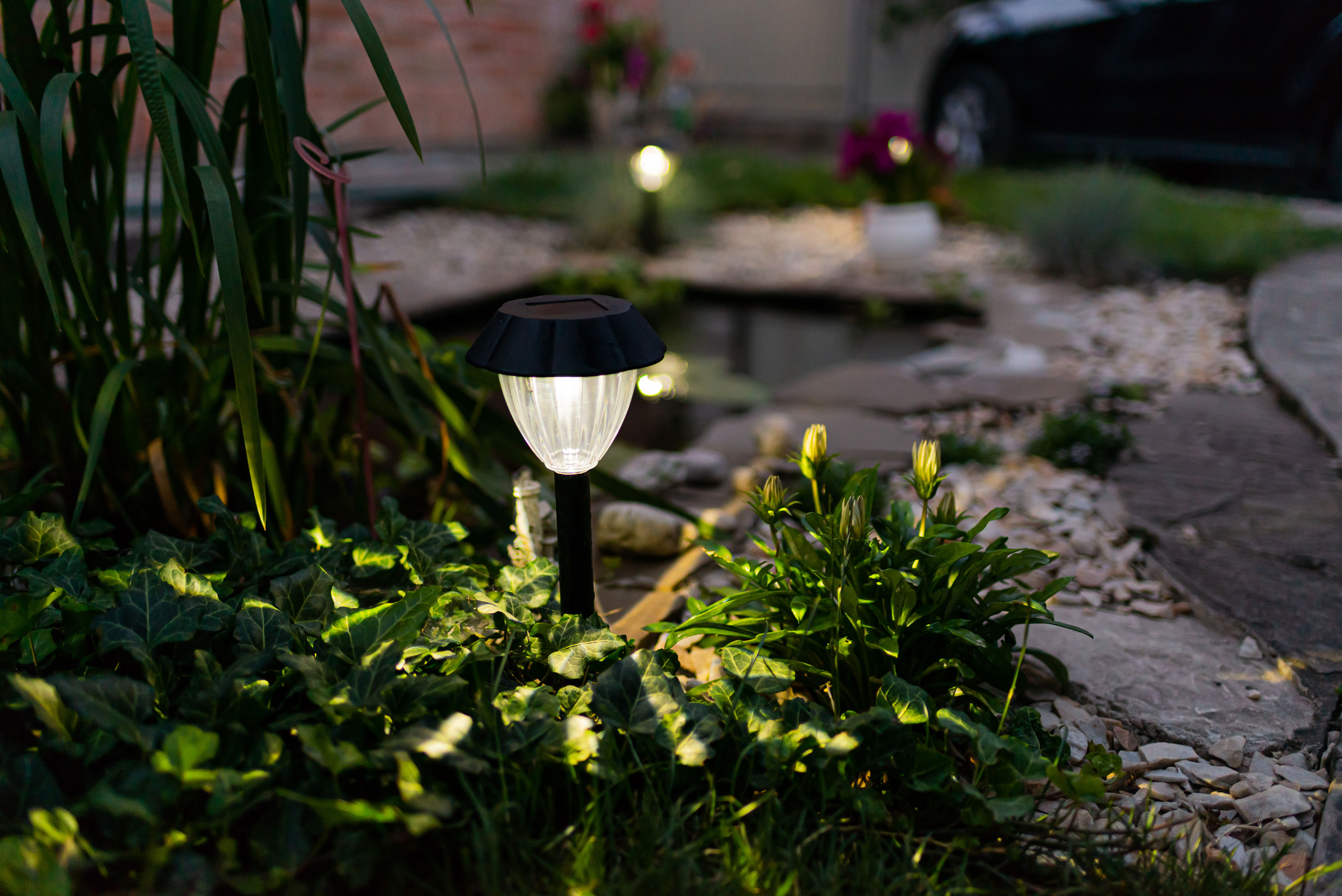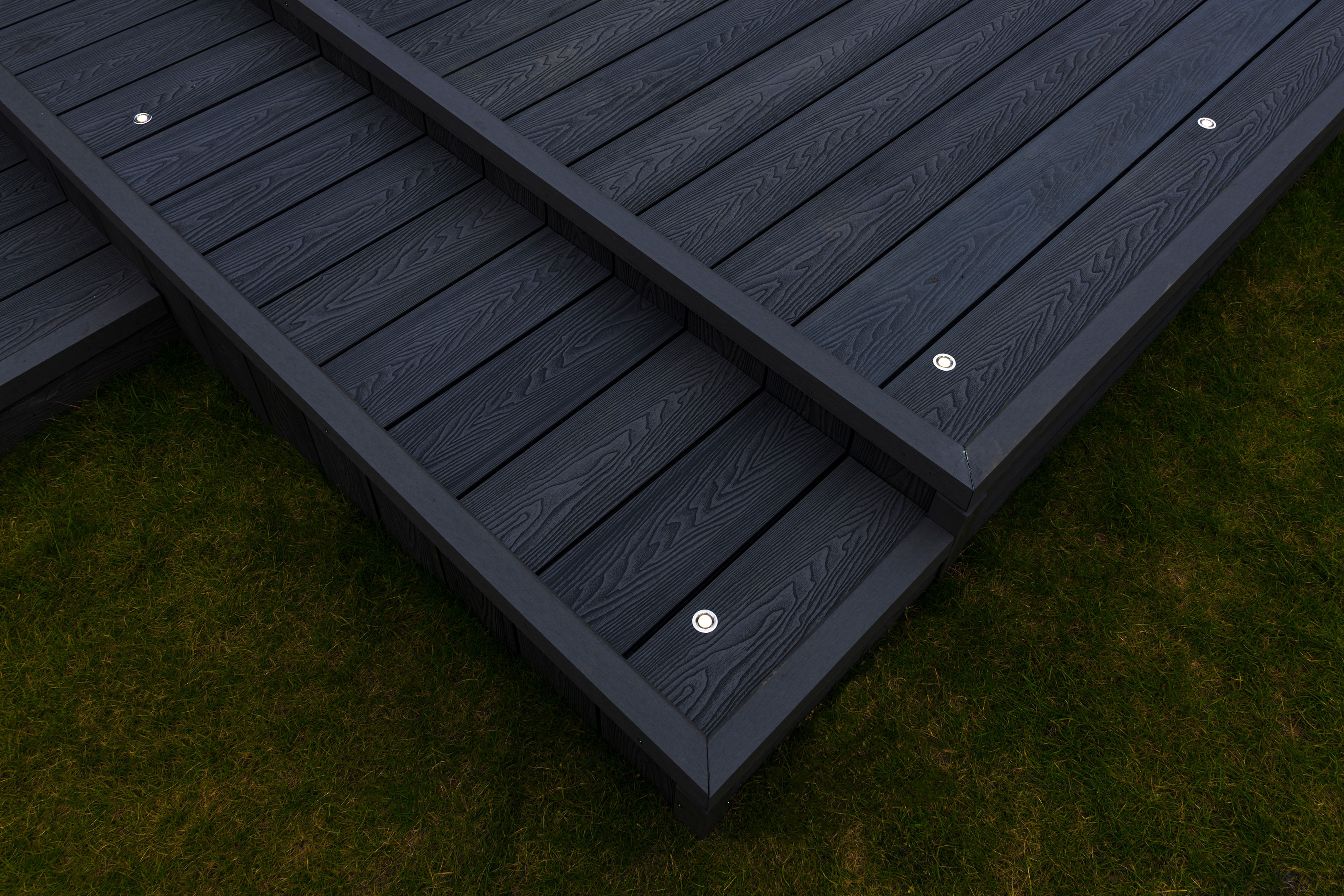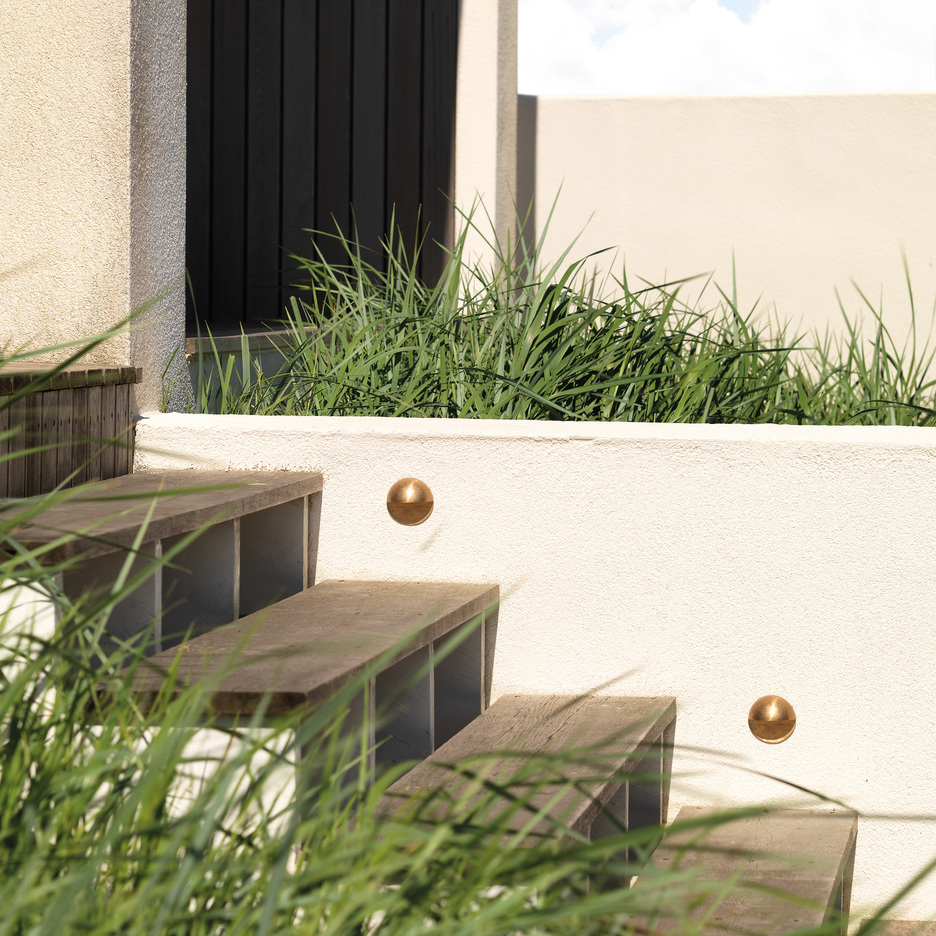Bright Ideas for Your Summer Garden: A Comprehensive Guide to Outdoor Lighting
With summer coming up, now is a great time to create the perfect outdoor lighting scheme to make the most of your garden when the warmer evenings arrive. There are several things to consider when creating summer garden lighting, so it’s good to take some time and make a plan before investing in lights. In this post, we explain everything you need to know about different garden lighting options and provide tips for creating your summer garden lighting plan
Why is outdoor lighting important?
Your garden is an extension of your home which should be viewed as a functional space to spend time in. If you want to get the best out of your garden, investing in outdoor lighting is essential, so you can spend time outside after the sun goes down.
Outdoor lighting has a variety of uses and can be both functional and aesthetic. There are two main purposes for outdoor lighting. These are mood and functional types.
Mood lighting
Mood lighting is a popular element in garden schemes. As well as providing general illumination in a garden after dark, mood lighting is specifically used to create an ambience and enhance the features of a property and its garden. Different types of outdoor fittings can be used for mood lighting in a garden, including spike lights, bollard lights, string lights, recessed lights, up and down lights, decking lights, step lights, and coloured outdoor lights.

As well as different types of lights, various techniques can be used in an outdoor lighting scheme to create mood and ambience. Layering is a popular technique used for this purpose, which incorporates different types of fittings strategically placed around the garden to position the light in certain places and highlight different features. For example, lights can be placed at different levels in the garden to create a beautiful layered effect. This may include ground, downlighting, and mid-level lights, such as bollard posts.
Functional lighting
Functional lighting includes all types of outdoor lights used in a garden for functional purposes. This includes security, access, and task lighting. This type is an extremely important element of a garden lighting scheme because it provides the illumination required for accessibility and use of outdoor space.
Accessibility is a key consideration when creating a garden lighting scheme. It’s important to ensure the right fittings are chosen and strategically placed to ensure safe access around a garden. Popular access lighting types include step, outdoor wall, bollard, and ground lights, including recessed lights, decking lights, downlights, uplights, and patio lights.
Security is another key element to include in a garden lighting plan. Outdoor security lighting helps to deter intruders and alert you to motion around your property. Many outdoor security lights have inbuilt motion sensors, allowing them to come on automatically when movement is detected. Security lights are typically installed on the exterior wall of a property and can double up as access lights for rear and side entrances.
Task lighting includes all garden lights used to illuminate an area of a garden, so it can be used for functional purposes in low illumination conditions. This includes lights used for physical activities such as sports or manual labour, for which work lights or floodlights are a common choice. It also includes lights placed strategically in specific garden areas to maximise utility, such as seating and cooking areas. Different types of lights can be used for this purpose, including the wall, bollard, decking, spike, and ground lights.
Recessed and decking lights explained
Outdoor recessed lights are installed directly into the surface of the ground, patio, or decking to hide any electrical connections and create a contemporary, sleek finish. This type of outdoor light not only looks fabulous but can be functional, too, serving as both practical and mood lighting.

Recessed and decking lights like our Marker Deck Light IL1201 provide a subtle ambient glow and offer a direct light source which can be used for access and task lighting in the area in which they are installed. For example, decking lights can illuminate the decking area for task lighting and safe access, with step lights being especially useful for safe access to steps in the garden.
This type of lighting creates a beautiful visual effect and magical ambience when used well. It is popular for illuminating pools, hot tubs, seating areas, BBQ areas, and pathways. Recessed and decking lights are also energy-efficient because they typically use LED bulbs.
Downlights
Small downlights are great for adding layered light at different levels around the garden. A good technique is to make a feature by fixing mini downlights to a fence or trellis to shine the light downwards onto certain areas or features of the garden. Trellis is great for this purpose since cabling can be concealed behind it for a neat finish.
This mini LED downlight is perfect for use for this purpose. It’s rated IP65, making it ideal for outdoor use because it can withstand harsh weather conditions such as wind and rain. It gives off a warm, ambient 3000k colour temperature and is available in a range of finishes, including white, black, polished chrome, and satin nickel, which allows you to get the perfect look for your garden.
Uplights
Small downlights are great for adding layered light at different levels around the garden.

They can be installed into the ground or decking, providing light in an upwards beam. These lights are extremely versatile and can be used to illuminate a decking area, steps, paths and patios, as well as for feature lighting effects.
This versatile outdoor ground light is a high-quality uplighting solution which can be installed into decking, patio or the ground. It’s available in solid brass or stainless steel finishes, with both round and square options available to create the perfect look for your garden.
For decking, steps, and ponds, this mini LED marker light is an ideal solution. Rated IP68, it’s extremely durable and water-resistant, making it ideal for installation around pools, hot tubs, and ponds for a wonderful ambient effect.
Tips for choosing the right lights for your garden
Creating a garden illumination plan before investing in different fittings for your garden is a good idea. This will allow you to give some thought to the best ones for your intended use and about the layout and size of your garden.
To create a garden lighting plan, sketch out a basic layout of your garden with all the key elements such as walls, patios, decking areas, trees, statues, sheds, summerhouses, ponds, pools, hot tubs, bbq areas, flowerbeds etc. It doesn’t have to be a masterpiece but try to keep everything in proportion. If possible, take some measurements of your garden and write these on your plan.
Once you have your basic garden plan, you can consider what you want your lighting to achieve and where it should be located. Begin with functional lighting, such as security lights, to illuminate specific areas such as paths, patios, and decking. Then you can consider how to add mood lighting in addition to this.
The right lighting will depend on the layout of your garden and its features. For example, if you have steps, you will want to illuminate these for safe evening use with low level lighting like Tivola LED. The same goes for paths. Any areas you use at night will need functional lighting. If you have decking or a patio, you may want to add recessed lights for a smooth, clean finish.

Consider what features you want to highlight. If you want to illuminate a pool, pond or hot tub, it’s a good idea to choose specially made for this purpose and IP68-rated, as these can be submerged in water up to 1.5m deep. Also, spikes are a great choice if you want to feature a specific plant, tree or sculpture.
It’s also important to consider the size of your garden when choosing lights. You don’t want your lights to be too bright or not bright enough for the space. To a certain degree, this may depend on personal preference. However, as a general guide, you can use this quick calculation: measure the square footage of the area you want to light and multiply this number by 1.5 to give you a rough estimate of the required wattage. For example, if you want to light a patio area that is 100 square feet, you will need 150 watts which can be achieved by installing multiple recessed lights.
It should be noted, however, that wattage is not always an indicator of brightness with contemporary LED lights. You will also need to consider the lumens and colour temperature, which we will cover in the next section.
Consider which garden lights are best for each area of your garden based on the look and functionality required. Then, use your sizing calculations to determine how many fittings you need or how bright they need to be.
Outdoor lights: Brightness and colour temperature
Just like indoor lights, outdoor lights can be different colour temperatures and brightness levels, so it’s important to factor this in when choosing the right lights for your garden. Some outdoor lights come with bulbs while others don’t, but all will have guidelines on the compatible wattage. You can use the calculations in the previous section to determine your required wattage for each garden area.
Of course, when it comes to mood lighting, you may want less brightness in a given area to create a relaxing or dramatic atmosphere. If this is the case, opt for smaller and subtler lights.
When it comes to LED outdoor lighting, brightness is measured in lumens. You will therefore want to consider the lumens a light has before buying. The following is a good guide for different areas of your garden:
- For step lighting, opt for between 12-100 lumens.
- For path lighting, opt for between 100-200 lumens.
- For pond or pool lighting, opt for between 200-400 lumens.
- For landscape lighting, opt for between 50-300 lumens.
- For wall lights, opt for between 50-200 lumens.
- Garden floodlights should generally be between 700-1300 lumens.
- Motion sensor security lights should generally be between 300-700 lumens.
In addition to the brightness of your garden lights, you should consider the desired colour temperature, as this will significantly impact the finished effect. Colour temperature is measured in degrees Kelvin (K) and ranges between 3000k – 6000k. If the colour temperature is 3000k, it will be warmer, like yellow-white. If it is 4000k, it will be a neutral white colour, while 6000k indicates a bright white colour.
Before investing in lights for your garden, take some time to consider your desired brightness and colour temperature. Generally, warmer colours are great for lighting on or around architectural elements or for ambient mood lighting. In contrast, cooler colour temperatures work well for plants and trees, as well as access and security lighting.
Enhance your outdoor space with the right lighting
If you want to get the best out of your garden this summer, planning ahead and choosing the right lighting is important. The wrong lighting can have unpleasant effects, such as when lighting that’s too bright becomes blinding when going from one environment (the home) to another (the garden). To avoid this, opt for subtler lights and create a layered effect by placing different lights in different areas of your garden.
As we have learned, it’s important to consider the size and layout of your garden as well as the intended use for the different lights. Pay attention to the brightness and colour temperature of lights as well as the IP rating to ensure the lights you choose are appropriate for your intended use and visual effect.
Now you have all the information you need to create the perfect summer garden lighting plan. By combining different types of lighting, you can create the perfect balance between ambience and functionality.
Recent Posts
-
Illuminate Your Evenings: Stylish Pergola and Gazebo Lighting
As the sun sets and casts a soft glow over the garden, picture a pergola or gazebo bathed in warm, …3rd May 2024 -
Smart Outdoor Lighting: How to Effortlessly Setup, Customise and Control
Imagine stepping outside to a beautifully illuminated patio, pathways subtly lit for safety, and vi …26th Apr 2024 -
Outdoor Lighting Safety: Using Standard Bulbs in Waterproof Fittings
Waterproofing and safety are paramount in outdoor lighting. Rain can infiltrate outdoor lighting sy …22nd Apr 2024




